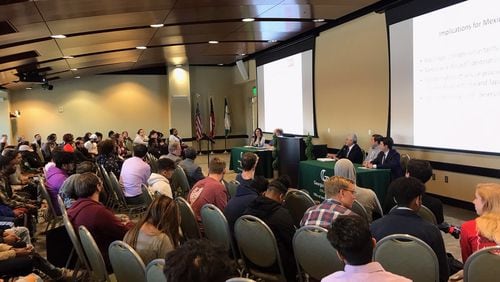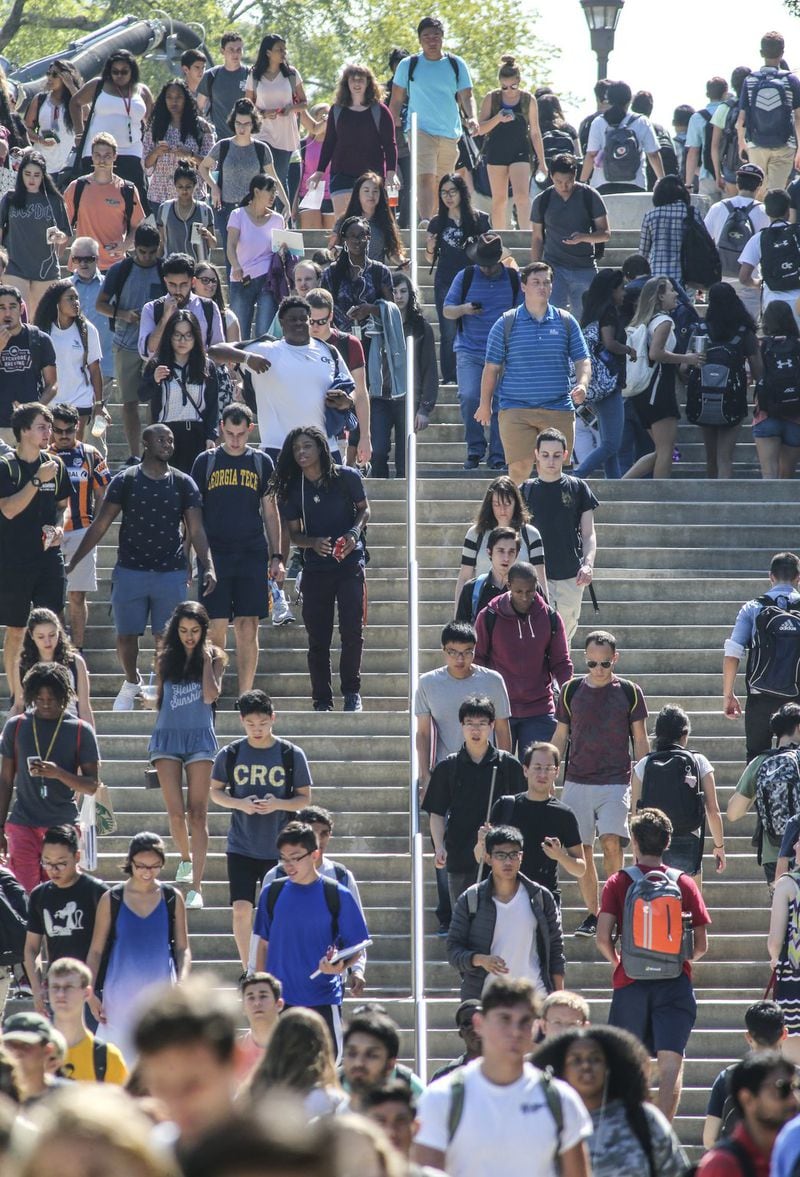Fewer students are coming to the United States to take college courses, a troubling statistic for some educators who say they’ve become critical to helping schools conduct research and create businesses in this country.
International student enrollment declined by about 20,000 students during the 2018-2019 school year to 872,214, according to an annual report released Monday by the U.S. State Department and the Institute of International Education. It’s the second consecutive year there’s been such a decline.
The number of new international students also declined for the third consecutive year. There were 269,383 such students in the U.S. during the 2018-19 school year, a 1% decline from the prior school year, the report showed.
Georgia’s international enrollment bucked the national statistics, increasing by 3.7% last school year to 23,623 total students. Much of the increase appears to come from more international students taking online courses at Georgia Tech. Thirty-one percent of its online master’s program students are international students abroad, Georgia Tech said.
The report comes a week after the U.S. Supreme Court heard arguments in a case centered on President Donald Trump’s decision to scrap an Obama administration program that is temporarily shielding nearly 700,000 young immigrants from deportation. The young people are called “Dreamers.”
The national decline is a “side effect” of immigration and trade disputes between the United States and Chinese governments, some experts say. The two nations are in a trade war and Chinese media outlets have published reports about crime in the U.S. to scare its young people about studying here. More Chinese students take college courses here than any nation, the report shows.
>> RELATED | U.S. draws fewer new foreign students for 3rd straight year
“It might take a long time for U.S. institutions to rebuild credibility with China,” said Martin Van Der Werf, associate director of the Georgetown University Center on Education and the Workforce.
Immigration policy may again play a pivotal role in the 2020 presidential race, and could be part of the discussion when the Democratic Party candidates take the stage for a debate Wednesday in Atlanta. Candidate Andrew Yang, for example, has reportedly said he would offer green cards to any international student who earns a degree in the U.S.
Jenna Robinson, president of the James G. Martin Center for Academic Renewal, a Raleigh, North Carolina-based higher education think tank, said some U.S. colleges are under increasing pressure from taxpayers to accept more in-state students instead of international students.
Robinson said many U.S. colleges and universities could be in trouble financially if the enrollment decline continues, noting there have been fewer American-born students attending college in recent years. Colleges typically charge international students higher tuition than American-born students.
The report showed, technically, the number of international students increased by about 1,000 students, to nearly 1.1 million nationwide. There are about 220,000 students in the Optional Practical Training program, which provides work permits to foreign-born students.
Georgia Tech, with about 6,500 international students, had nearly twice as many such students than any other school in Georgia last year, according to the report. Savannah College of Art & Design was second, with nearly 3,900 international students. SCAD was first among what the report titled “special focused institutions” in enrolling international students.
Georgia Gwinnett College hosted a series of panel discussions Monday about the Hispanic workforce, its economic power and immigration as part of its International Education Week. First-year student Darimar Reyes, 19, born in the Dominican Republic, attended one of the discussions Monday for a political science class. She said one barrier is money for many friends in her homeland seeking a U.S. college education.
“It’s really expensive,” Reyes, now a U.S. citizen, said of college education in America. “A semester here is like a whole year (in the Dominican Republic).”
Robinson echoed Reyes’ comments. She added that many nations have improved their higher educational systems in recent years, and they’re more affordable. Robinson said U.S. schools may have to lower tuition or improve their marketing efforts.
“For a long time, we were the only game in town if you want a graduate degree,” Robinson said. “That’s not true anymore.”
A SNAPSHOT OF GEORGIA’S INTERNATIONAL STUDENTS
Category 2018 2019
International students 22,789 23,623
U.S. rank 15 12
Pct. change from prior year 5.9 3.7
Sources: U.S. State Department and Institute of International Education









